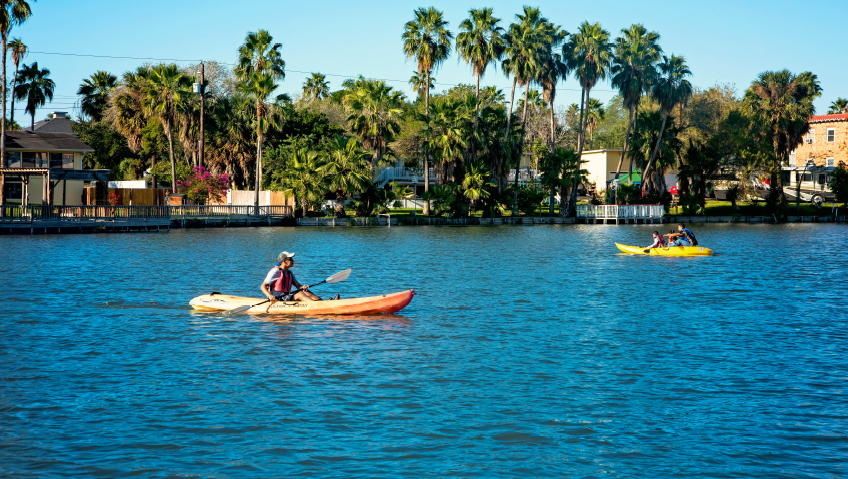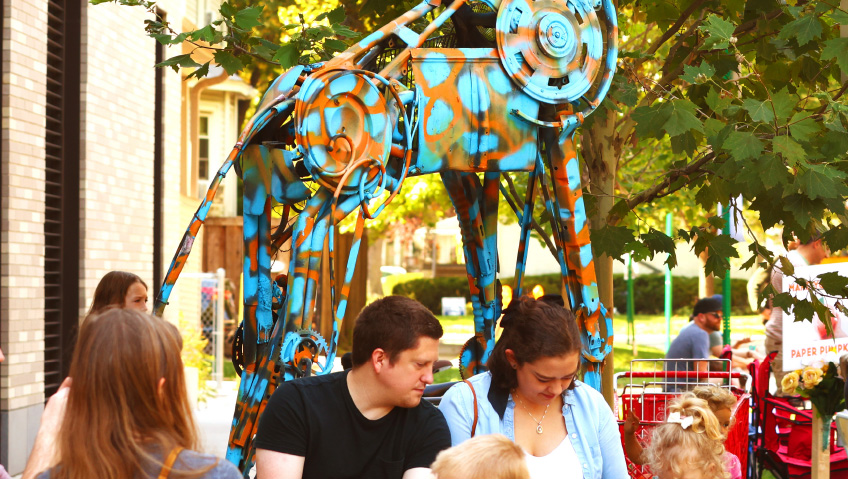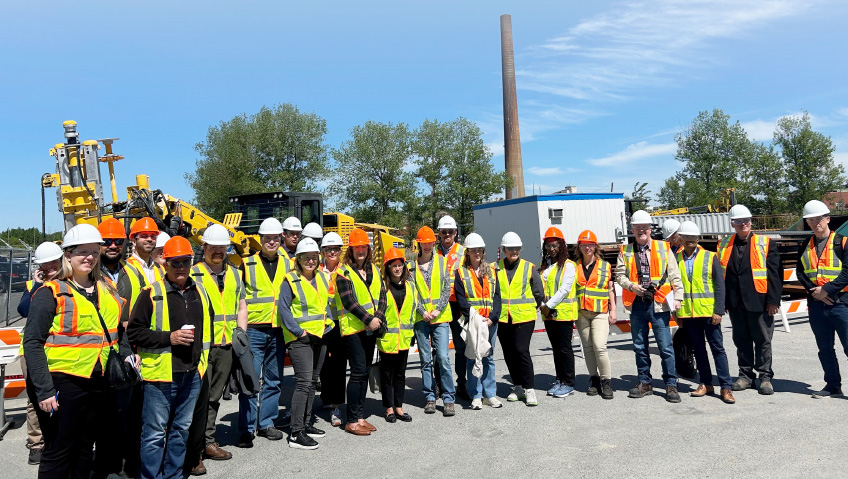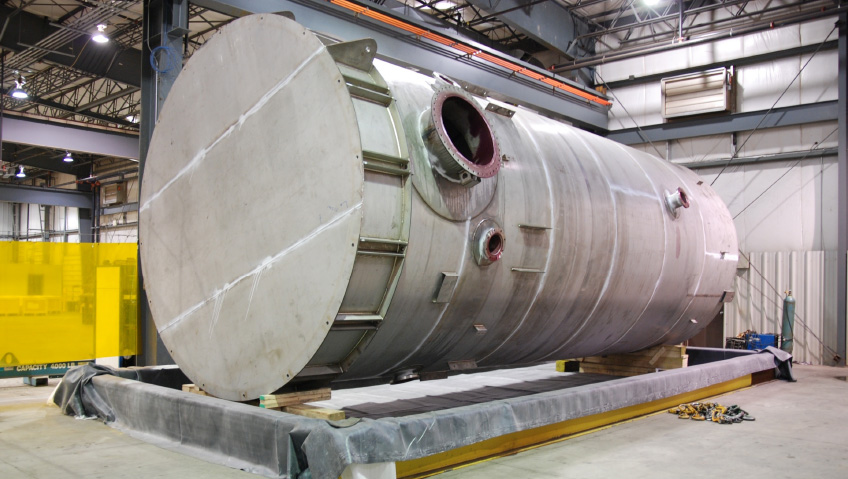As the second most historic city in the state of Texas, Brownsville has old roots and modern, forward-thinking industries. This community of both the past and future enjoys the unique position of being the only city in the world with five methods of international trade: air, sea, road, rail, and space.
You read that last one right. Brownsville is home to the SpaceX launch site and UTRGV’s STARGATE, making the city a gateway to space in addition to more traditional destinations.
Brownsville’s placement at the southern tip of the United States, along the Mexican border, is a key factor that attracts the aerospace industry to the area, particularly to Boca Chica Beach. “The City of Brownsville has been able to use that as our advantage,” says Brownsville Community Improvement Corporation [BCIC] Marketing and Small Business Development Director Nathan Burkhart. “The closer you are to the equator, the easier it is to launch rockets. A lot of people don’t know this, but Cape Canaveral and Boca Chica Beach were both in the same running back in the sixties to see who was going to be the area for NASA’s launch site. Clearly, Cape Canaveral won out, but now, within the private sector, Brownsville is winning out.”
Brownsville’s convenient location has long made the city a strategic center for trade and commerce. “Being a city on the border by the Gulf of Mexico, trade has always been in the history of our town, and it still is one of the top industries that we have down here,” says BCIC Executive Director Josh Mejia. In addition to a new state-of-the-art airport, rail access, a maritime port, major road access, and a spaceport, Brownsville is also a foremost center for manufacturing and healthcare.
The BCIC works hard to attract and support local businesses, and the key to its success is its willingness to adapt to the times. “Our strategies have changed in the past couple of years in regards to initiating these new economic development trends that we’re seeing nationwide,” Mejia says. Traditionally, economic development focused on incentivizing a large employer to relocate from one community to another. “But through that traditional model, there’s always going to be a loser,” he points out. “Economic development has to be self-sustaining instead of repeating the same process and using the same resources to just attract one company after another, hoping and crossing your fingers that that company will not relocate to another place and having that community end up losing the jobs that it once worked to gain.”
To achieve sustainable economic development, BCIC focuses “on business development at all levels, not just working in partnership with our key stakeholders to attract larger employees but, more importantly, to be able to foster start-ups and continue to help those small and medium-sized businesses in our community thrive and grow,” Mejia says. “That provides a much larger return on investment in the long run because these folks are born and bred in the same culture, in the same community, and are, therefore, more inclined to give back, hire locally, et cetera.”
The BCIC works to understand real-world challenges within the community and create the best incentive programs in response. These incentives could be anything from technical assistance and continuing education to financial incentives or expediting the permitting process. “We know that in business, time is money, especially when it comes to commercial and residential industrial development,” Mejia says. “So when we say simple things like we’re going to work in partnership with the city to be able to help you through the permitting process and cut your ten-month timeline to a five-month timeline, that’s a huge incentive in itself. So a lot of our non-traditional economic development strategies revolve around that.”
As well as providing standard economic development support, BCIC works to help businesses thrive long-term. “We go a little bit deeper than that to be able to understand exactly what else we can do to not only making it a success but make it a lasting success,” Mejia says. The BCIC wants to keep businesses in Brownsville, not just until another city tempts them away. The goal is for these businesses to grow roots within the community and give back, creating a sustainable relationship that benefits all.
The BCIC puts a particular emphasis on entrepreneurial support. Brownsville has a strong history of entrepreneurship stretching back to the mid-nineteenth century, and the BCIC is eager to build on this foundation. “The BCIC is focused heavily on not only assisting our entrepreneurs but making our ecosystem here open and inclusive to anyone,” Burkhart says. This means encouraging future business owners who may not fit the traditional mold. “Entrepreneurs can be anyone who has a business that has a potential to commercialize or scale,” he points out.
The new eBridge Center for Business & Commercialization is currently being built in partnership with the BCIC, The City of Brownsville, the University of Texas Rio Grande Valley, and the federal government. The center will help establish entrepreneurial equity by developing and advancing an open and inclusive ecosystem for all entrepreneurs. The aim is to mobilize the next generation of entrepreneurs and equip them with the skills and resources needed to create jobs, access capital, and scale commercially.
“It’s going to be the largest entrepreneurial resource center south of San Antonio, the largest of its kind in the Rio Grande Valley,” Burkhart says. He explains that the center will be a ‘one-stop-shop’ for entrepreneurs at all stages of business development, from brainstorming a concept to taking an existing business to the next level.
The eBridge Center will place a particular emphasis on connecting participants to funding opportunities. “One of the biggest problems that all entrepreneurs face is access to capital,” Burkhart says. “So in creating the eBridge Center, we wanted to really focus on the availability of capital for these entrepreneurs.” The BCIC created the StartUp Texas program to offer seed funding to specific start-ups that meet certain criteria.
A key objective is to keep businesses in Brownsville. By providing funding and other means of support, “These great businesses that are starting up in Brownsville that need capital can remain in the city as opposed to venturing out to either Houston or Austin to seek funding and then establishing the businesses there,” Burkhart says.
“So the efforts that we’ve made have been to both provide the same opportunities entrepreneurs seek out elsewhere… and also to really highlight the wins within our community.” These wins speak for themselves. “The businesses that have been able to succeed and scale I think are prime examples of some of the work that we’ve been able to do,” he says.
Business owners and entrepreneurs are attracted to Brownsville for more than just the business opportunities the community provides. The city also offers a great quality of life. “We have a little bit of everything,” Mejia says. Stunning beaches, extensive hiking and biking trails, and beautiful resacas—oxbow lakes created from the Rio Grande—provide plenty of opportunities for outdoor activities. A quaint, historic downtown with a unique mix of French and Mexican architecture is a hit with tourists, as is the city’s award-winning Mexican cuisine.
“We have a lot of national and state recognized eateries here in the city—food that you will never experience anywhere else in the country,” Mejia says. The city is also a stopping point for a vast array of migrating birds, drawing bird watchers from all over the globe. “It’s actually the number-one area of the world with the most diverse selection of birds that travel through here and migrate south,” he says.
The City of Brownsville has a long history of entrepreneurship and business success. Now, with the burgeoning aerospace industry and a spaceport, the opportunities are only increasing. Armed with a strong commitment to attracting and supporting incoming and existing industries, the community is well placed to make the most of these emerging opportunities for many years to come.






